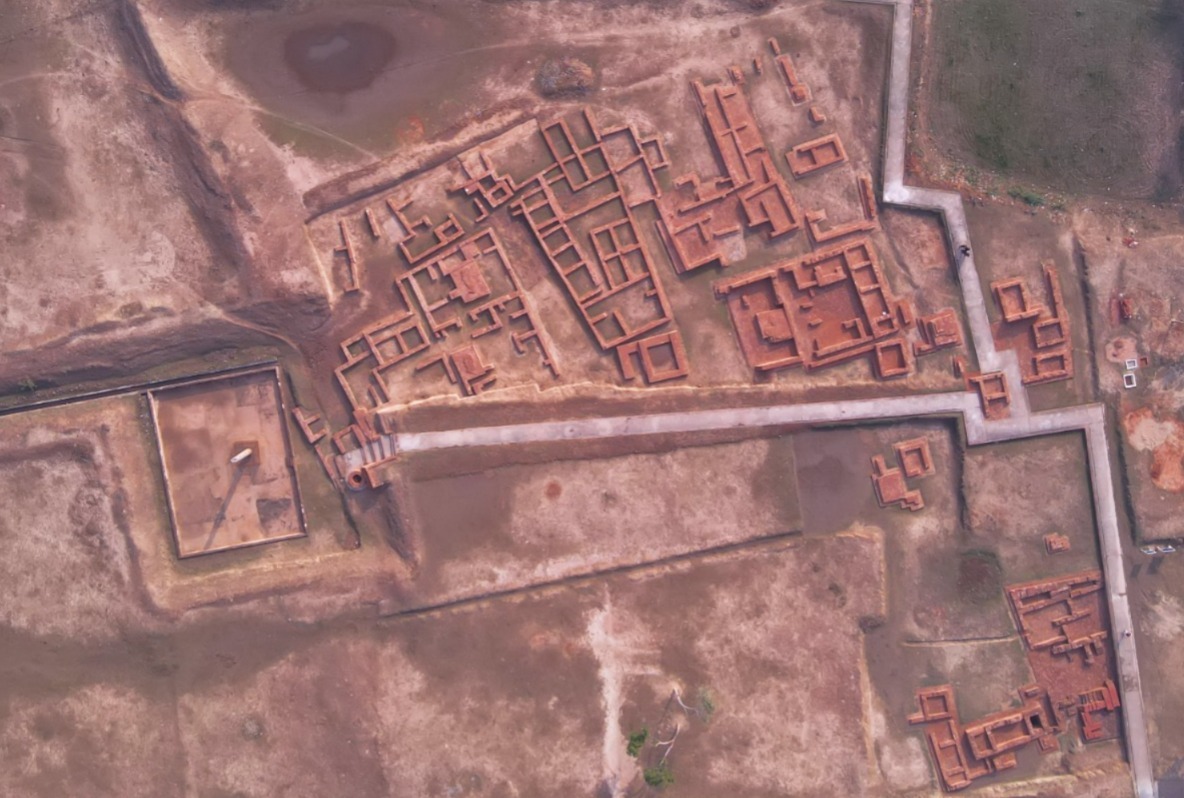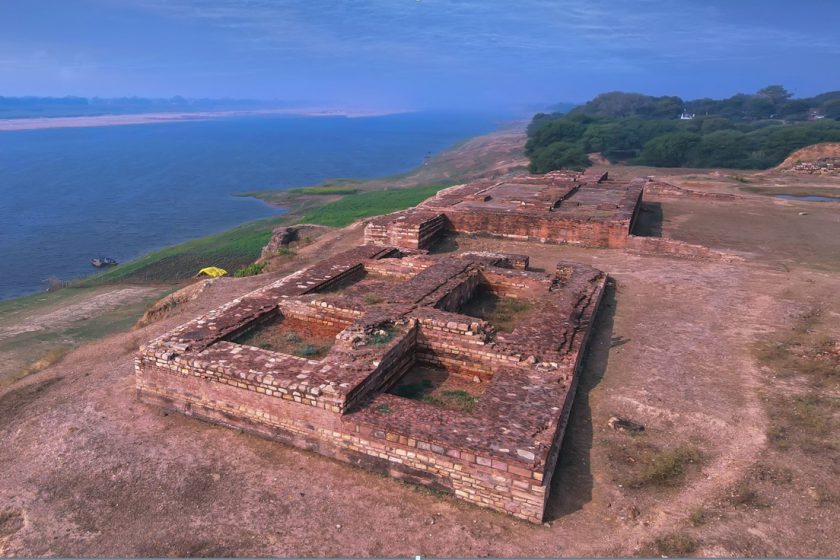Overview
Kaushambi, located in present-day Uttar Pradesh, was a prominent city in ancient India and the capital of the Vatsa kingdom. The rulers of Vatsa were strong supporters of Buddhism, creating a favorable environment for its growth. This made Kaushambi one of the largest and most vibrant centers of Buddhism during the Buddha’s time. The people of Kaushambi were highly devoted to learning and spiritual practice, nurturing Buddhist teachings and supporting monastic communities. Historical records indicate that the city once housed ten monasteries, although many now lie abandoned, and it had around 300 Hinayana monks. Additionally, five temples dedicated to various deities attracted numerous worshippers.

The Buddha’s Stay at Ghositarama Monastery
During his sixth and ninth rainy season retreats (varshavasas), the Buddha resided at Ghositarama Monastery in Kaushambi, a prominent town along the Yamuna River. The monastery, set in a serene forest of simsapa trees, was generously offered by the devoted lay disciple Ghosita, a wealthy merchant. Several other monasteries were established in Kaushambi, including Kukuta, Pavarikambavana, and Badarika. Bhikkhus were appointed as sutra masters to memorize and recite key teachings such as the Sutra on the Turning of the Wheel of Dharma and the Noble Eightfold Path, while precept masters guided novices and ordained monks in ethical conduct. Even young novices, such as Rahula, observed the samanera precepts under this structured guidance, ensuring the Buddha’s teachings were preserved through oral tradition and disciplined practice. As mentioned in the Anguttara Nikāya (4.160, Ghosita Sutta): "At one time the Blessed One was staying at Kosambī, in Ghosita’s Park."
Chinese pilgrims Fa Hien (5th century CE) and Xuanzang (7th century CE), in their travel accounts, noted: "About 100 steps from the vihara, the marks of the four Buddhas’ movements, seating, and activities can still be seen. Nearby are the remnants of a well and bathing place used by the Buddha. While water remains in the well, the bathing area has been destroyed over time. In the southeast corner of the city, the ruins of an ancient monastery where Ghoshira lived can still be observed. Here stands a vihara and a stupa, housing relics such as the Buddha’s hair and nails, along with the remnants of his bathing area."
Significance of the Rainy Season Retreat
Buddhist scriptures record that Gautama Buddha spent his 6th and 9th varshavasas in Kaushambi. These three-month monsoon retreats provided monks an opportunity to stay in one place, avoid travel, and deepen their meditation practice. Even today, monks observe this tradition, remaining within their monastery compounds throughout the rainy season after receiving blessings from senior teachers.
During these retreats, the Buddha delivered several important discourses, strengthening and spreading the Buddhist doctrine in the region. His presence attracted numerous followers, making Kaushambi a thriving hub of spiritual activity.
The Famous Sandalwood Buddha Statue
In an ancient part of the city stands a grand vihara, 60 feet high, containing a sandalwood statue of the Buddha beneath a beautifully carved stone parasol. Commissioned by King Udayana, the statue was considered miraculous, as it occasionally emitted light. Many kings attempted to move it, but all efforts failed. Replicas were made elsewhere, often mistaken for the original, though the true statue remains here.
Legend narrates that when the Buddha ascended to the heavens to teach the Dharma to his mother for three months, King Udayana desired a statue to worship in his absence. He requested Maudgalyayana to send a skilled craftsman to heaven to observe the Buddha and carve a perfect statue from sandalwood. Upon the Buddha’s return, the statue rose from its place, prostrated at his feet, and received his blessing: "May you guide the misguided and show the true path of Dharma to many for years to come."
Excavations at Kaushambi have revealed the remains of Ghositarama Monastery, stupas, and an Ashokan pillar, although the pillar was later moved to Allahabad (Prayagraj) by the Mughal emperor Jahangir. These ruins stand as enduring reminders of the Buddha’s time here. Today, the ancient monastic remains and the serene landscape of Kaushambi offer pilgrims and visitors a reflective space to contemplate the Buddha’s teachings and his enduring message of compassion.


